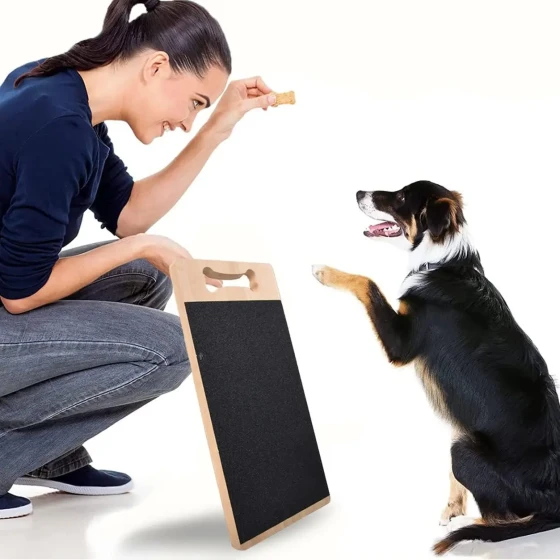How Should Pets Fly on Airplanes?

Dog
Air transport is the fastest method for pet shipment, with a short duration that spares pets from the torment of long journeys. It is especially suitable for long-distance shipping. Additionally, for those traveling with pets, air transport is also indispensable. However, flying with pets is not a simple matter. What procedures do pet air shipments have to go through, and what regulations do airlines have in this regard?
1. Consultation
For pets "flying", the procedures vary depending on the destination. Staff from Shuofang Airport Passenger Service Department introduced that "domestic travel" is relatively simple. Pets need to carry quarantine certificates issued by a formal veterinary hospital and prepare an airline crate that can prevent feces leakage and has good ventilation. Also, place some water and dry food inside the crate. If the pet's health condition on the day of the flight is good, it can board the plane.
Pet shipping fees are not included in the owner's free baggage allowance and need to be paid separately at 1.5% of a full economy class ticket price. For example, shipping to Guangzhou is 20 yuan/kg, and to Chengdu is 25 yuan/kg. Fees depend on ticket price and travel distance. It is also important to remind travelers bringing pets on "domestic trips" to contact the relevant airline before booking tickets and learn in advance whether the cargo hold is oxygenated or non-oxygenated and if it supports pet transport.
Companies like Sichuan Airlines and China Southern Airlines do not have special restrictions on pet breed or size, but airlines such as China Eastern limit pet breeds, dog types, size details, and aggressive dogs are not allowed on planes. Different airlines have different requirements and need to be checked in advance.
2. What quarantine certificates are required for flying with pets?
According to relevant Ministry of Agriculture regulations, for personal quarantine declarations, pet owners must apply for quarantine with the local animal health supervision agency 3 days before transporting dogs or cats. When applying, a rabies vaccination certificate and corresponding laboratory test reports for diseases are required. The immunization period for rabies of transported dogs and cats must exceed 21 days. Laboratory reports must be issued by accredited laboratories designated by provincial animal health supervision agencies, including tests for canine distemper, canine parvovirus disease, or feline panleukopenia (cat plague), and rabies antibody testing.
Currently, official veterinarians first verify each dog’s or cat’s rabies antibody test report and other laboratory test reports, and then conduct individual examinations through visual inspection, palpation, and auscultation methods. Major checks include mental status, temperature, breathing, skin, coat, visible mucous membranes, chest, abdomen, superficial lymph nodes, excretion activities, and excrement characteristics. Qualified pets receive an "Animal Quarantine Certificate."
3. Overseas travel also requires a “passport”
Pets traveling overseas need to go through complicated procedures. First, owners must apply to the airline, and after approval, apply for relevant quarantine certificates. A staff member from Wuxi Entry-Exit Inspection and Quarantine Bureau explained that outbound pets need to obtain a "passport." According to the "Animal and Plant Quarantine Law of the People's Republic of China" and its implementing regulations, and the "Entry and Exit Personnel and Carried Items Quarantine Management Measures" and related laws and regulations, pet owners must declare the pet to local quarantine agencies 7 days before departure. During declaration, they must provide the original and a copy of the rabies vaccination certificate or immunization registration issued by animal health supervision departments above county level and personal exit documents.
At the same time, if the importing country or region has special quarantine requirements for entering pets, the pet owner must also provide a rabies antibody titer test report and microchip injection certificate. Quarantine staff will review submitted documents, such as vaccination certificates and antibody test reports, and verify whether the pet’s breed and characteristics match the declaration. After approval, the quarantine declaration is accepted. Additionally, outbound pets must undergo on-site quarantine, where staff judge the pet’s mental condition, coat color, breathing, temperature, and secretions. Only after passing all inspections do pets receive their outbound "passport"—the "Animal Health Certificate." Pets found in poor health must undergo isolation quarantine. If common diseases such as salmonella are detected, the animal is prohibited from leaving; only after treatment and passing tests can they be allowed to depart.
Moreover, many travelers carrying pets on airplanes have a common headache: pets generally are not allowed in the cabin. Recently, however, an American airline introduced a special service that allows passengers to bring pets onboard, known as the "Pet Cabin."
The report states that the "Pet Cabin" is a double-layer ventilated cabinet set beside first-class seats where pets can be placed. However, pets cannot be too large since the pet cabin is not a seat but a storage cabinet measuring 48 cm high, and 33 cm wide and deep.
The report points out that the service is currently only available on Airbus A321T flights from Los Angeles or San Francisco to New York. Each pet costs just $125 USD (about 799 RMB), but passengers purchasing "Pet Cabin" tickets must provide veterinary documents.




-560x560.webp)
